Table of Contents
Decoding Your Electricity Bill: What Every Component Means
Do you often find yourself confused when looking at your electricity bill? You're not alone. Many consumers across Pakistan struggle to understand the various components, charges, and technical terms listed on their electricity bills. This comprehensive guide will break down each element of your electricity bill, empowering you to understand exactly what you're paying for.
Understanding your electricity bill is not just about knowing how much to pay—it's about gaining insights into your consumption patterns, knowing how different charges are calculated, and identifying potential areas to save money. Whether you're a LESCO, MEPCO, GEPCO, or any other distribution company customer, this guide will help demystify your bill.
The Basic Structure of Pakistani Electricity Bills
While the exact layout may vary slightly between different distribution companies, most electricity bills in Pakistan follow a similar structure with these key sections:
1. Customer Information Section
- Consumer name and address
- Consumer ID/Account number
- Reference number
- Connection type (single-phase/three-phase)
- Sanctioned load
2. Billing Information Section
- Billing month/period
- Issue date
- Due date
- Meter reading dates (previous and current)
- Bill number
3. Consumption Details
- Meter readings (previous and current)
- Units consumed (kWh)
- Peak/off-peak consumption (if applicable)
- Multiplying factor (for industrial connections)
4. Charges Breakdown
- Energy charges
- Fixed charges
- Fuel price adjustment
- Taxes and surcharges
- Other charges and adjustments
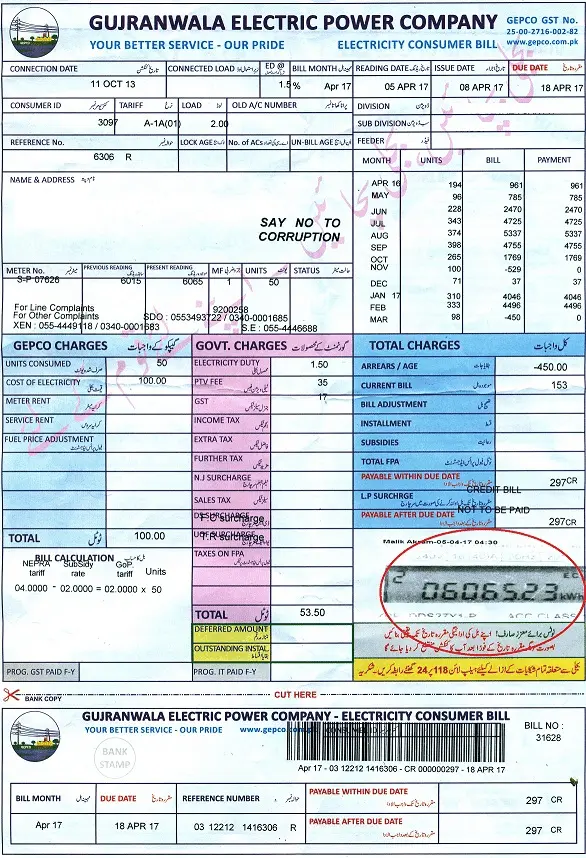
Understanding Meter Readings and Consumption
The most fundamental aspect of your electricity bill is the meter reading section, which shows how much electricity you've consumed during the billing period.
Types of Meter Readings
| Reading Type | Description | How It Affects Your Bill |
|---|---|---|
| Actual Reading | Physical reading taken by a meter reader who visits your premises | Most accurate billing based on your actual consumption |
| Estimated Reading | Calculated based on your historical consumption when actual reading is not available | May result in under or over-billing, which is adjusted in the next actual reading |
| Self-Reading | Reading provided by you to the utility company | Used when meter readers cannot access your meter |
| AMR (Automatic Meter Reading) | Digital reading automatically transmitted to the utility company | More accurate and eliminates human errors (available in some urban areas) |
How Units Are Calculated
The units consumed are calculated by subtracting the previous meter reading from the current reading:
Units Consumed = Current Meter Reading - Previous Meter Reading
For three-phase connections or industrial users, the actual consumption is calculated using a multiplying factor (MF):
Actual Units = (Current Reading - Previous Reading) × Multiplying Factor
Understanding the Tariff Structure
The tariff is the rate at which you are charged for consuming electricity. In Pakistan, electricity tariffs are structured in tiers or "slabs" where the rate per unit increases as your consumption increases.
Consumer Categories
Different types of consumers are charged differently based on their category:
- Domestic/Residential: Private homes and apartments
- Commercial: Shops, offices, and businesses
- Industrial: Factories and manufacturing units
- Agricultural: Farms and agricultural operations
- Bulk Supply: Housing societies and large complexes
The Slab System Explained
For domestic consumers, the tariff is divided into consumption slabs. The more electricity you use, the higher the rate per unit for additional consumption. Here's a simplified example of how slabs work:
| Consumption Slab (Units) | Rate per Unit (Rs.) | Example Calculation for 350 Units |
|---|---|---|
| 1-100 | 7.00 | 100 units × Rs. 7.00 = Rs. 700 |
| 101-200 | 10.50 | 100 units × Rs. 10.50 = Rs. 1,050 |
| 201-300 | 12.75 | 100 units × Rs. 12.75 = Rs. 1,275 |
| 301-700 | 15.00 | 50 units × Rs. 15.00 = Rs. 750 |
| Total Energy Charges: | Rs. 3,775 | |
Additional Charges and Adjustments
Beyond the basic energy charges, your electricity bill includes several additional components that significantly affect the final amount.
Fuel Price Adjustment (FPA)
The Fuel Price Adjustment is a variable charge that reflects changes in the cost of fuel used to generate electricity. It can be positive (increasing your bill) or negative (decreasing your bill) depending on global fuel prices and generation mix during the billing period.
How FPA is Calculated:
FPA = Units Consumed × FPA Rate for the Month
The FPA rate varies monthly and is determined by NEPRA based on the actual cost of fuel for power generation compared to the reference fuel cost built into the base tariff.
Fixed Charges
These are charges applied regardless of how much electricity you consume. Fixed charges typically cover:
- Grid maintenance costs
- Administrative expenses
- Distribution network upkeep
The amount depends on your sanctioned load and consumer category. Industrial and commercial consumers typically have higher fixed charges than residential consumers.
Taxes and Surcharges
Several taxes and surcharges appear on your electricity bill:
General Sales Tax (GST)
A percentage (typically 17-18%) applied to the total electricity charges.
Electricity Duty
A provincial tax, usually 1.5-2% of energy charges.
TV Fee
A fixed amount (Rs. 35-100) collected for Pakistan Television.
Neelum-Jhelum Surcharge
A surcharge to fund the Neelum-Jhelum Hydropower Project.
Other Miscellaneous Charges
You might also see these additional charges on your bill:
- Financing Cost Surcharge: A charge to cover financing costs of power generation projects
- Quarterly Tariff Adjustments: Adjustments made quarterly to reflect changes in operational costs
- FC Surcharge: Foreign Currency surcharge to cover exchange rate fluctuations
- BMC (Base Money Charges): Applied to some consumer categories
- Late Payment Surcharge: If you paid your previous bill after the due date
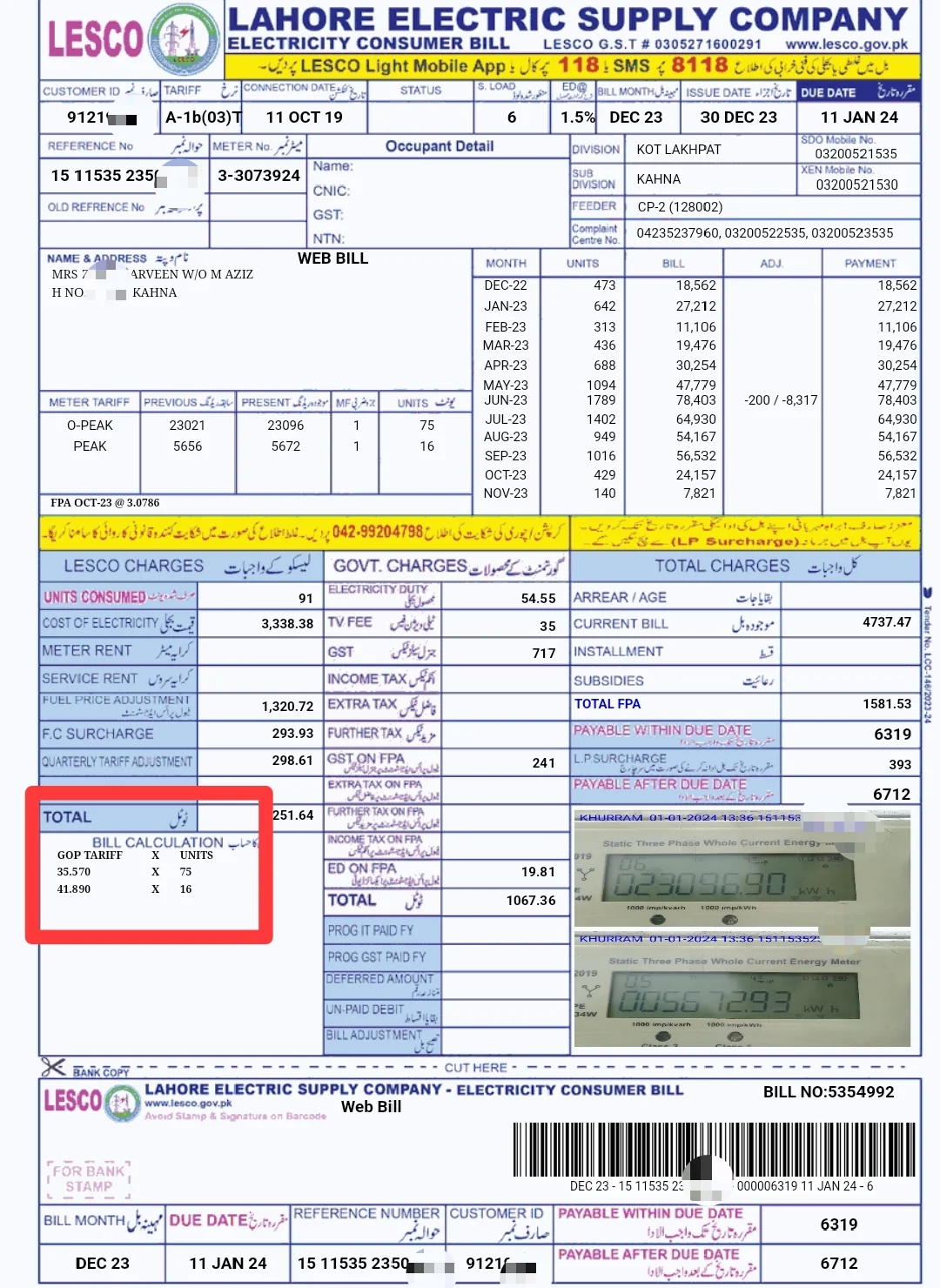
Understanding Payment Instructions
The final section of your electricity bill contains payment instructions and important information:
Due Date and Late Payment Consequences
The due date is the deadline by which you must pay your bill to avoid penalties. If payment is not received by this date:
- A late payment surcharge (typically 10%) is added to your next bill
- For prolonged non-payment, your connection may be disconnected
- Reconnection will incur additional charges
Payment Options
Your bill will list authorized payment channels, which typically include:
Banks
Pay at designated branches or through online banking
Mobile Wallets
JazzCash, Easypaisa, UPaisa, etc.
Company Offices
Pay directly at distribution company offices
For more detailed information on payment methods, you can read our comprehensive guide on Electricity Bill Payment Methods in Pakistan.
Special Notations and Codes
Your bill may contain certain codes or notations that provide additional information:
| Code/Notation | Meaning |
|---|---|
| A | Actual Reading |
| E | Estimated Reading |
| AV | Average Billing |
| MB | Minimum Billing |
| DR | Defective Meter Reading |
| PL | Provisional Lumpsum |
How to Verify Your Bill
It's always a good practice to verify your electricity bill for accuracy before payment. Here's how:
1. Check Your Meter Reading
Compare the current reading on your bill with the actual reading on your meter. They should match or be very close (if a few days have passed since the reading date).
2. Calculate Units Consumed
Subtract the previous reading from the current reading to ensure the units consumed figure is correct.
3. Verify the Charges
Check if the charges per unit match the current tariff rates. You can find current rates on your distribution company's website.
4. Check the Multiplier
Ensure that the correct multiplying factor is applied, especially for three-phase connections.
5. Compare with Previous Bills
A sudden unexplained increase might indicate a billing error or a potential issue with your electrical system.
Common Billing Errors and How to Address Them
If you believe there's an error in your bill, here's what you can do:
- Document the Issue: Take clear photos of your meter and bill
- Contact Customer Service: Call your distribution company's helpline or visit their nearest office
- File a Written Complaint: Submit a formal complaint detailing the discrepancy
- Follow Up: Keep track of your complaint number and follow up regularly
- Escalate if Necessary: If unresolved, escalate to NEPRA or the provincial electricity regulator
Common billing errors include:
- Incorrect meter readings
- Wrong tariff application
- Billing for periods when electricity was not supplied (load shedding)
- Meter multiplication factor errors
- Charges for a different consumer incorrectly applied to your bill
Conclusion
Understanding your electricity bill is an important step toward managing your energy costs effectively. By familiarizing yourself with each component and calculation method, you can:
- Identify billing errors quickly
- Make informed decisions about energy consumption
- Plan your budget better by anticipating bill amounts
- Implement targeted energy-saving measures
Remember that electricity tariffs and additional charges are subject to change. Stay updated with the latest information from your distribution company and NEPRA to maintain an accurate understanding of your bill components.
For tips on reducing your electricity consumption and lowering your bills, check out our article on 10 Effective Ways to Reduce Your Electricity Bill in Pakistan.
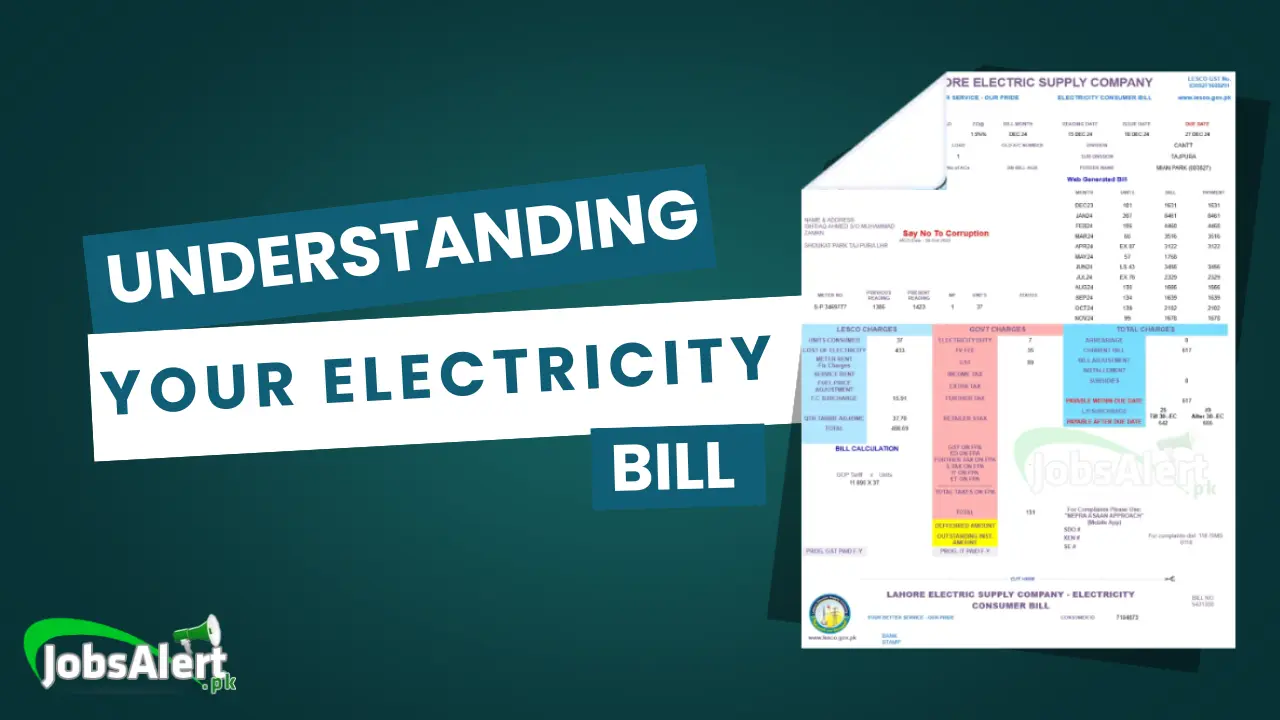
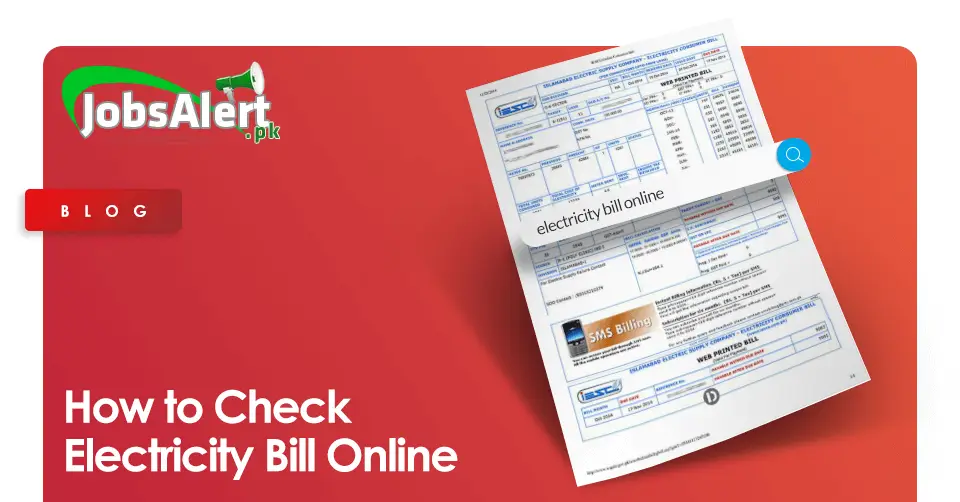
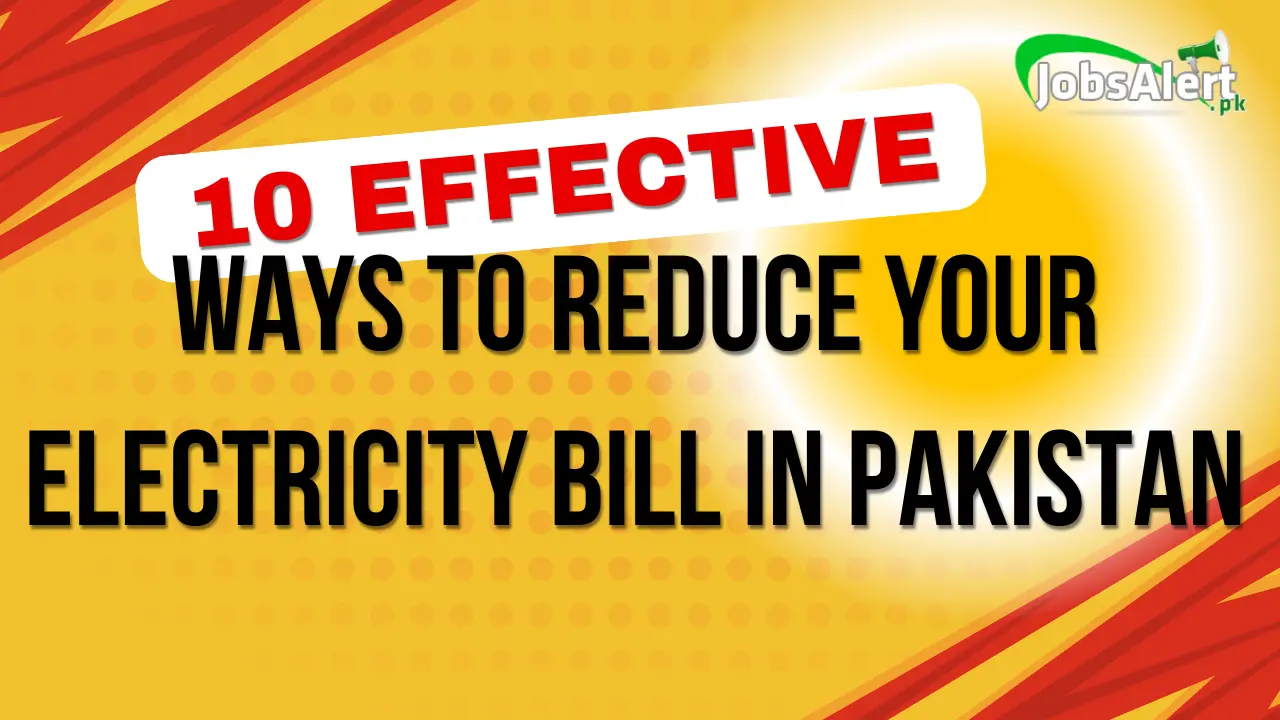

Comments
Comments are currently disabled for this article.